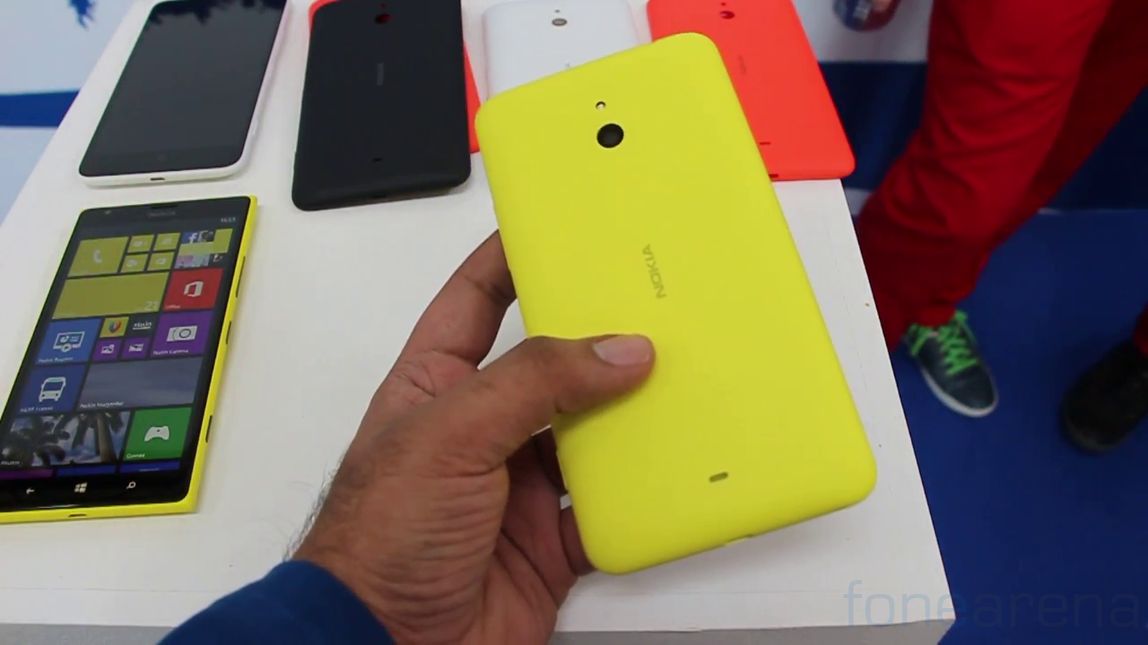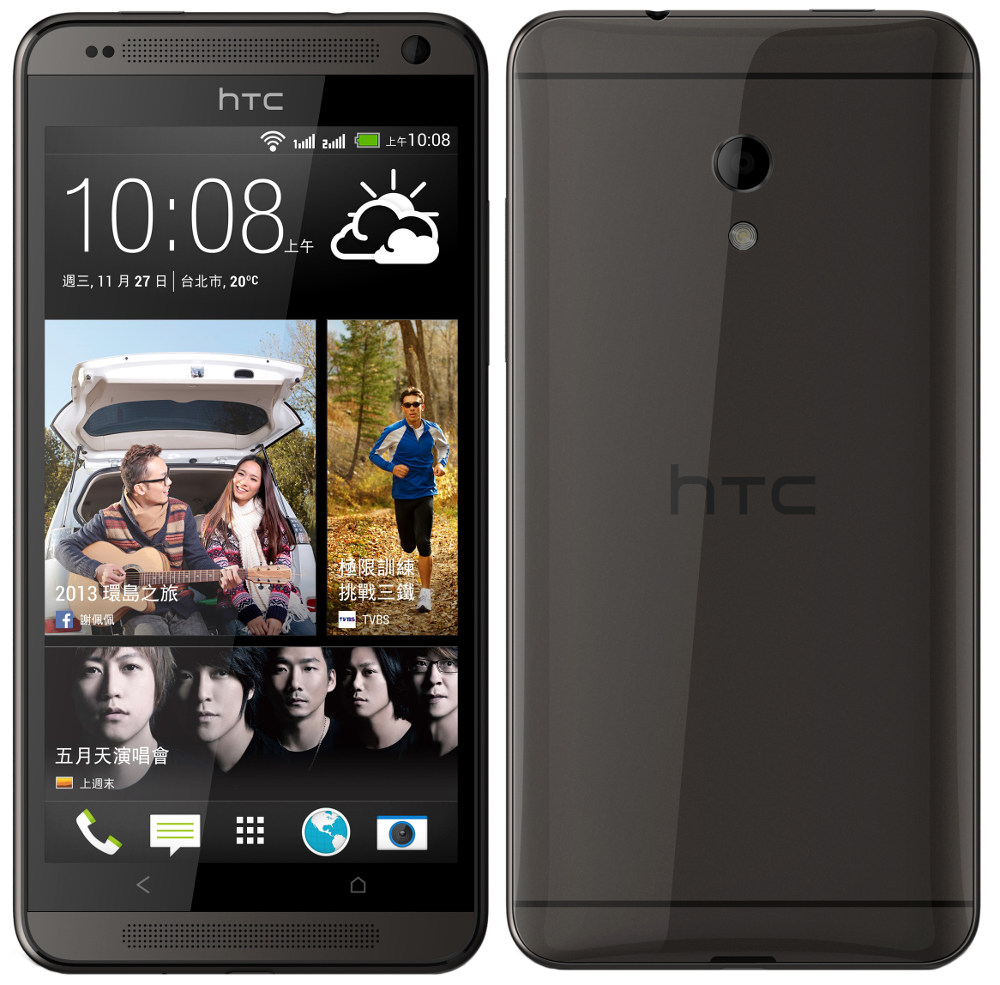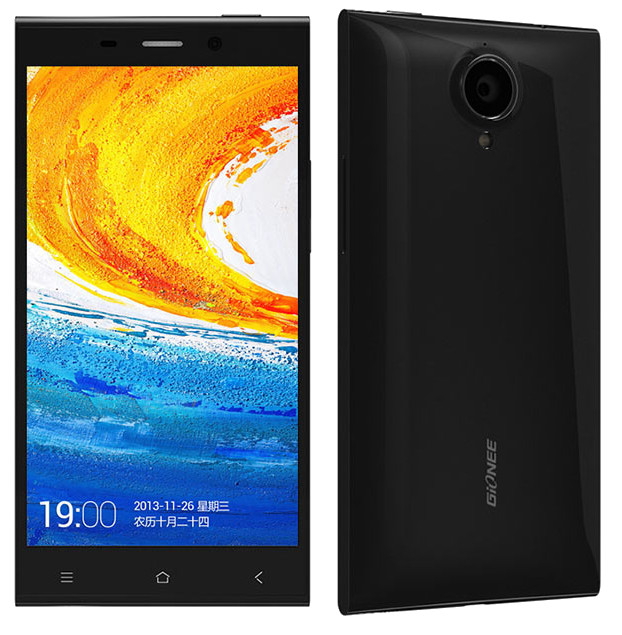Quechua announces a rugged 5" smartphone
Quechua in association with Archos has unveiled a rugged smartphone. The handset is designed with an active lifestyle in mind and is resistant to shock, mud, water, sand, cold and snow.
Quechua's newest smartphone is IP 54 certified and is powered by a 1.2 GHz quad-core processor and has 1GB of RAM on a Qualcomm chipset. The rugged device is built around a 5-inch display and offers a 5 megapixel main camera and 4 GB of internal memory that can be expanded via microSD card slot.
The smartphone runs on Android 4.1 Jelly Bean and packs a 3,500mAh battery, which according to the company lasts for about 22 hours on calling.
Quechua's rugged smartphone is priced at €230 (about $313). Unfortunately, there is no word on the availability of the device at the moment.
Xolo unveils Q500, a dual-SIM Android phone
 Xolo
unveiled a new addition to its smartphone lineup. The Xolo Q500 is an
affordable, compact dual-SIM Android phone, which has a 4" screen and
measures 118.5 x 63 x 10.7mm.
Xolo
unveiled a new addition to its smartphone lineup. The Xolo Q500 is an
affordable, compact dual-SIM Android phone, which has a 4" screen and
measures 118.5 x 63 x 10.7mm.The screen has WVGA resolution for 233ppi pixel density. The Q500 is powered by a Snapdragon MSM8225Q S4 Play chipset with four Cortex-A5 cores running at 1.2GHz, 1GB of RAM and Adreno 203 GPU. The phone runs Android 4.1 Jelly Bean.
On the connectivity side, the Xolo Q500 offers two SIM cards with 3G with HSPA (7.2Mbps downlink, 5.76Mbps uplink). There's also Wi-Fi b/g/n, Bluetooth 3.0, A-GPS and FM radio.
The Xolo Q500 has a 5MP camera on the back that can shoot 720p videos and a VGA camera on the front.
A cool software trick lets you snap a photo with Hindi text that will be automatically translated into English. You can have the phone read the translation out loud too. This feature is called X-TransPic and will be available on other Snapdragon-based Xolo phones.
The Q500 packs 4GB of storage that can be expanded with a microSD card (up to 32GB). The battery has 1,450mAh capacity.
The Xolo Q500 is priced INR 7,999 ($130) and is available right now in India.
Nokia Moneypenny Dual SIM Windows Phone 8.1 handset reportedly in the works

Nokia Normandy, a large screen Asha phone leaked a couple of days back, now evleaks has hinted that the Nokia smartphone codenamed Moneypenny would come with dual-SIM support. The twitter user already revealed that the Nokia Goldfinger and Moneypenny would be the first Windows Phone Blue devices. Windows Phone Blue is the codename for Windows Phone 8.1, which would see a drastic change unlike the GDR updates.
The Nokia smartphone codenamed Goldfinger is also rumored run on Windows Phone 8.1 Blue and come with 3D Touch features using a hardware sensors to detect interactions, according to a recent report. Windows Phone 8.1 is rumored to come with actionable notifications, notification center, and a Siri-like personal digital assistant.
We still don’t have the specifications of the dual-SIM Nokia phone, but evleaks reports that the phone would launch in emerging markets such as India, which is already flooded with budget dual SIM Android smartphones. Hope we can see these new smartphone at the MWC 2014 next year, where Nokia is expected to show off range of Windows Phone and Asha devices.
HTC announces Desire 700, 501 and dual-SIM 601 in Taiwan

HTC has announced the Desire 700 dual sim, the company’s latest smartphone in the Desire series in Taiwan. It packs a 5-inch qHD (960 x 540 pixels) display, powered by a 1.2 GHz quad-core Qualcomm Snapdragon 200 processor and runs on Android 4.1.2 Jelly Bean. It has a 8-megapixel camera on the back with LED flash, BSI sensor, 28mm lens, F 2.0 aperture, HTC Zoe and 1080p video recording and a 2.1-megapixel front-facing camera with BSI sensor. It has HTC BlinkFeed home screen and HTC BoomSound with Dual frontal stereo speakers with built-in amplifiers similar to the HTC Desire 600 dual sim.
HTC Desire 700 dual sim specifications
- 5-inch (960 x 540 pixels) display
- 1.2 GHz quad-core Qualcomm Snapdragon 200 processor
- Android 4.1.2 (Jelly Bean)
- Dual SIM (3G + 2G)
- 8MP rear camera with LED Flash, BSI Sensor, 1080p video recording
- 2.1 MP front-facing camera with BSI Sensor
- 3.5 mm headset jack
- HTC BlinkFeed
- 10.3 mm thick and weighs 149 grams
- HTC BoomSound, Dual frontal stereo speakers with built-in amplifiers
- 1GB DDR2 RAM, 8GB internal memory, expandable memory up to 64GB with micro SD
- 3G, WiFi 802.11 a/b/g/n, DLNA, Bluetooth 4.0 with aptX, GPS with a-GPS
- 2100 mAh removable battery
HTC Desire 501
If the 700 is a HTC One alternative, then the Desire 501 looks up to the HTC One mini. It has a 4.3" WVGA screen, dual-core 1.15GHz processor (almost certainly not a Krait, maybe it's a Cortex-A6 like the Desire 500).
The phone has the same 8MP/2.1MP camera combo as the 700 along with HTC ImageChip, but strangely no Zoe support. There's no stereo speakers on the front either.
Still, the Desire 501 is like the 700 in several other aspects, it has 1GB of RAM, 8GB of storage with a microSD expansion slot and a 2,100mAh battery. This gives the phone several weapons over the One mini (card slot, bigger battery) but the screen is no match for the 720p LCD on the mini, nor is the CPU up to par with the Krait-based chipset.
The 501 is not a dual-SIM phone, you can look to the very similar HTC Desire 500 for that.
The phone will cost NTD 9,900 ($330) in Taiwan.
HTC Desire 601
The HTC Desire 601 is already official, but now it also got a dual-SIM version. The phone is a 4.5" version of the 701, with almost the exact same feature set except that the main camera has been demoted to a 5MP/1080p shooter and the internal storage has been halved to 4GB (the microSD card slot is still in place).
There's dual-SIM support, front-facing BoomSound stereo speakers and a quad-core 1.2GHz processor.
This one is priced NTD 10,900 ($370).
HTC also showed off the Desire 300, but there's nothing new about that. It's the cheapest of the bunch, costing NTD 7,900 ($270).
There's no indication of which (if any) of these phones will be available worldwide and when.
Acer C720P Chromebook goes official with a touchscreen on board
Acer took the wraps off a new member of its Chromebook lineup. Carrying the model number C720P, the newcomer puts an Intel Haswell Chip, an 11.6” 1366 x 768 touchscreen, and affordable price tag under the same roof.
The Acer C720P is only the second Chromebook to sport a touchscreen behind Google’s own Chromebook Pixel. With a $299.99 price tag however, Acer’s offering undercuts the Chromebook royalty by a cool $1,000.
Like its sibling announced earlier this month, the Acer C720P Chromebook features Intel’s Celeron 2955U Haswell CPU. The latter is good for 7.5 hours of battery life. There are two gigs of RAM on board, 32GB of built-in storage, and 100GB of free Google Drive for two years. Wi-Fi a/b/g/n handles the internet connectivity.
The rest of the Acer C720P specs include HD webcam, USB 3.0 and 2.0 ports, HDMI port, and stereo speakers. The notebook weighs 2.98 pounds (1.35kg) and sports a waistline of 0.78” (19.8mm).
The Acer C720P will be available in early December at BestBuy, Amazon, and directly from the manufacturer.
Nokia Lumia 525 with 4-inch IPS display, dual-core processor and 1GB RAM announced

Nokia has just announced the Lumia 525, their new affordable Lumia Windows Phone 8 handset and the successor of the Lumia 520 that was launched earlier this year. It has a 4-inch (800 x 480 pixels) display at 235 ppi, super sensitive touch for finger nail and glove use and is powered by a 1 GHz dual core Snapdragon S4 processor. It has a 5-megapixel auto focus rear camera with 720p HD video recording, packs 1GB of RAM and a 1430 mAh battery.
Nokia Lumia 525 Specifications
- 4-inch (800 x 480 pixels) IPS display
- 1 GHz dual-core Qualcomm Snapdragon S4 processor (MSM8227) with Adreno 305 GPU
- Windows Phone 8 OS with Lumia Black
- 5MP Auto Focus camera with 720p HD video recording
- 9.9 mm thick and weighs 124g
- 1GB RAM, 8GB internal memory, up to 64GB expandable memory with microSD
- 3.5mm audio jack, FM Radio
- 3G, WiFi 802.11 b/g/n, Bluetooth 4.0, GPS / aGPS
- 1430mAh battery
Gionee Elife E7 with 5.5-inch 1080p display, Snapdragon 800 processor, 16MP camera announced
Gionee has officially launched the Elife E7, the company’s latest flagship smartphone at an event in Shanghai, China. It has a 5.5-inch (1920 x 1080 pixels) Full HD IPS touch screen display based on One Glass Solution from JDI with Corning Gorilla Glass 3 protection and a 2.33mm ultra-narrow frame, powered by a 2.2 GHz quad-core Snapdragon 800 MSM8974 processor for the 3G version and the LTE version has a 2.5 GHz quad-core Snapdragon MSM8974AC processor It runs on Android 4.2 (Jelly Bean) with Amigo 2.0 UI.

It packs a 16-megapixel auto focus rear camera with 1/2.3″ 1.34 µm Largan M8 sensor, 5 element Sapphire Lens and a 8-megapixel auto focus front-facing camera. It comes in two variants, 2GB RAM with 16GB internal memory and 3GB RAM with 32GB internal memory. It has new ways to wakeup the screen such as Double Tap, Black Screen Gesture that lets you draw the gestures on the black screen to go to customized apps and Voice Control.
Gionee Elife E7 specifications
- 5.5-inch (1920 x 1080 pixels) Full HD IPS touch screen OGS display with Corning Gorilla Glass 3 protection
- 2.2 GHz quad-core Snapdragon 800 MSM8974 processor / 2.5 GHz quad-core Snapdragon MSM8974AC (LTE) with Adreno 330 GPU
- Android 4.2 (Jelly Bean) with Amigo 2.0 UI
- 16MP auto focus camera, LED flash, 1/2.3″ 1.34 µm sensor, Sapphire lens, 1080p video recording
- 8MP auto focus front-facing camera
- Dimensions – 150.6 x 75.0 x 9.5mm-6.2mm; Weight: 150 grams
- 3.5mm audio jack, FM Radio
- 3 microphones for noise cancellation
- 2GB RAM with 16GB internal memory / 3 GB RAM with 32GB internal memory
- LTE/3G, WiFi 802.11 b/g/n, WiFi Direct, Bluetooth 4.0, GPS, USB,OTG, NFC
- 2500 mAh built-in battery
The Elife E7 would launch globally in the early 2014. Gionne has also announced that the company would launch the E7 mini with a Mediatek octa-core chipset
Nokia Normandy leaks out alongside another Asha handset
A duo of unannounced members of the Nokia Asha family made the rounds on Twitter, courtesy of @evleaks. The first handset from the duo is codenamed Nokia Normandy, while the other one’s alias is yet to be revealed.At a quick glance, the Nokia Normandy appears bound to take the Lumia design to the Asha range. There’s no info on the specs of the device, though it looks bound to take a spot at the top of the Nokia Asha family.

The unnamed Nokia Asha on the other hand, sports a rather unusual design. There’s no info on its specs at the moment.

The Nokia Normandy and its mysterious sidekick are yet to be announced. We’ll update you with more details as soon as we get them.
Apple officially acquires the 3D sensor tech company PrimeSense
Apple confirmed its acquisition of the 3D sensor technology company PrimeSense. Based in Israel, the company is responsible for the Kinect sensor of the Xbox 360.
Apple reportedly paid close to $360 million for PrimeSense. The aforementioned amount is higher than a previously floated sum which was in the vicinity of $300 to $350 million.
At this point, there’s no word on what Apple’s intentions for using the PrimeSense tech are. Speculation on possible implementations ranges from future Apple TV products, all the way to mobile devices.
Mass-market HTC One in Gold goes official
This just in - a golden-colored HTC One becomes official, courtesy of HTC itself. This isn't the 24-carat Gold Genie version, nor the 18-carat MOBO one. This is a gold-colored aluminum HTC One
The device will join the new Blue and Red and the classic Silver and Black on the shelves. Underneath the newly colored is just a champagne-colored HTC One with a 1080p 4.7" screen, quad-core Snapdragon 600 and 4 MP camera with Ultrapixels and OIS.
CyanogenMod 11 ROM based on Android 4.4 KitKat hits the Samsung Galaxy S4
Samsung will be releasing an official Android 4.4 KitKat software update for its flagship Galaxy S4 smartphone. Nevertheless, if you don’t want to wait until January, today a CyanogenMod 11 ROM based on the latest version of Android has been released for the phone.
The ROM is in currently in Alpha, so it’s only suitable for enthusiasts and people who are willing to help with finding (and fixing) bugs. Currently, the bug list is quite long, but that’s understandable. Some of the most annoying bugs includes non-working screen auto-rotation, low microphone volume and no video recording.
Furthermore, some apps experience problems with storage, there’s no haptic feedback and images don’t get displayed in the gallery. There are more bugs, but they’ll be surely get fixed over time.
The good news is that users are reporting that the ART runtime is running flawlessly and improves performance quite a bit. If you’re eager to get your hands on the unofficial CyanogenMod 11 alpha ROM and experience pure Android 4.4 KitKat on your Samsung Galaxy S4 (I9500) follow the source link below. Instructions on how to install it await you there, too.
Samsung announces Galaxy Grand 2
Samsung has announced the new Galaxy Grand 2 smartphone that features several improvements over its predecessor. To start off, it features a new design that is similar to the new Galaxy Note 3 with a stitching pattern around the faux leather back.
The larger display means the new model is slightly taller and wider than its predecessor. It still has a dual-SIM slot and the same 8 megapixel camera on the back. The Galaxy Grand 2 comes with Android 4.3 Jelly Bean.
The phone will be available primarily in white, with black and pink offered in select regions.
Alcatel Idol X+ pictures and specs surface
The Alcatel Idol X+ is going to run on MediaTek’s newly announced chipset, which features the world’s first true octa-core CPU. Its screen size resolution hasn’t been officially confirmed, but given that its Idol X predecessor already hit the 1080p mark, we wouldn’t expect anything less from the Idol X+. The camera is also expected to retain the same 13 megapixel resolution.

Alcatel Idol X+ photos
TCL has confirmed that it will be partnering with Chinese online retailer JD.com for the launch of the Alcatel Idol X+, but hasn't said anything about pricing or availability dates just yet. We are also still in the dark regarding eventual global release of the smartphone.















































